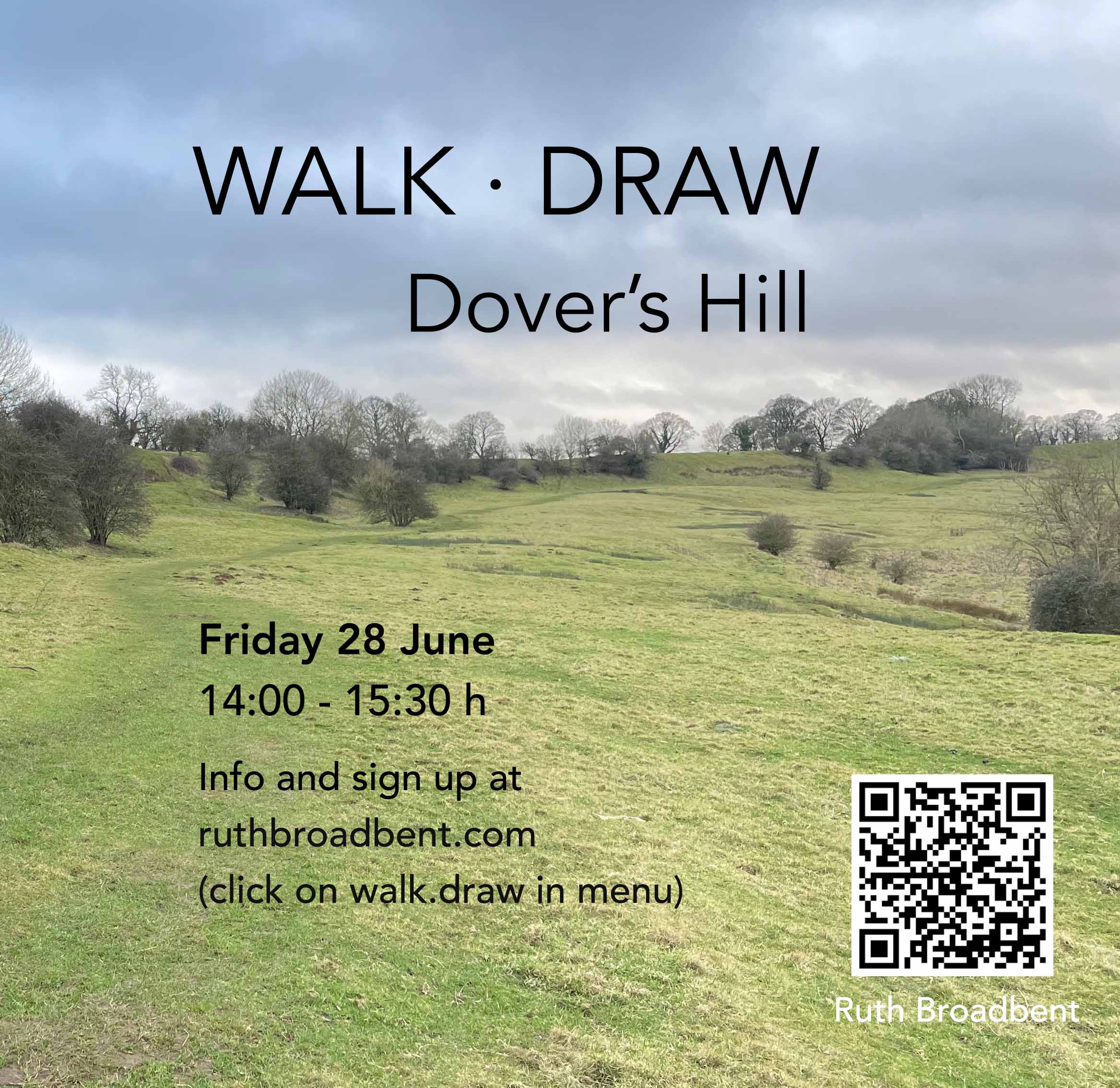We’ll start on the top of Dover’s Hill then walk and draw our way into the landscape, following a series of guided drawing exercises and prompts. Dover’s Hill is above Chipping Campden in the Cotswolds, with great views over the Vale of Evesham. On a clear day you can see to the Malverns and Black Mountains.
Moving at a relaxed pace in a friendly atmosphere, we’ll take a creative and experimental approach to finding inspiration in our surroundings. With a panoramic view from the top of the hill, we’ll zoom out to the view and into the details, as well as responding to serendipitous encounters along the way.
This walk.draw event is led by artist and tutor, Ruth Broadbent. It is inspired by Ruth’s walks during a recent exhibition of her work in Chipping Campden. The exhibition featured thirty-nine of her drawings from A Line Across England, when she cycled ancient tracks across England, from Norfolk to Weymouth.
Additional info on Eventbrite booking page.



